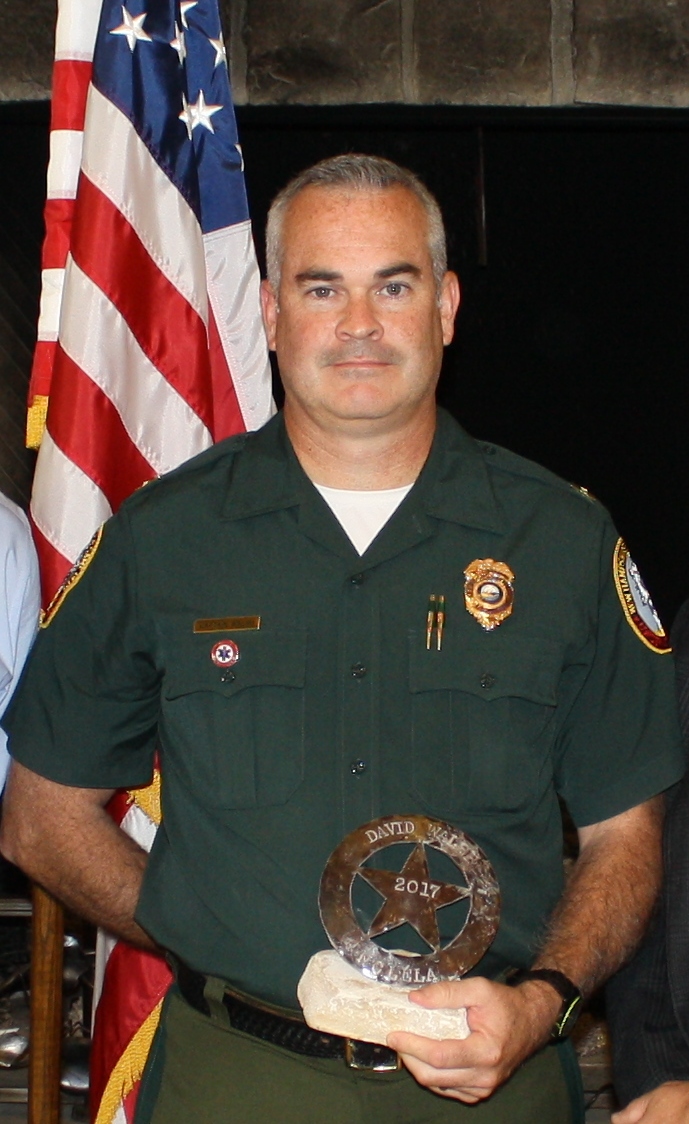DENVER - Naimah Aziz oversees inspections and investigations of live wildlife and wildlife products arriving in the busiest wildlife port in the United States. More than 35,000 shipments come through her jurisdiction, which covers John F. Kennedy International Airport, La Guardia International Airport and the United States Postal Service International Mail Facility.
In her second year as an assistant coach for the International Conservation Chiefs Academy, Aziz sees how the academy benefits participating African nations, state wildlife officials, and U.S. Fish & Wildlife Service officials such as herself.
Niamah Aziz
“Africa is a big source nation and we are a big consumer nation of illegally trafficked wildlife,” she says. The relationships she’s developing with wildlife officials in 17 African nations as a result of the academy are invaluable.
“To have a point of contact in these nations is very helpful,” says Aziz, supervisory wildlife inspector in the USFWS Office of Law Enforcement in Valley Stream, N.Y.
The FWS Office of Law Enforcement will be able to reach out to contacts made at the academy on specific questions regarding their regulations and the wildlife species and products coming from their countries. That’s important given so many different regulations, so many protected species (roughly 5,800 animal and 30,000 plant species protected by CITES), and the escalation in illegal wildlife trafficking. The monetary value of such crime has risen an estimated 26 percent to $91-258 billion today compared to $70-213 billion in 2014, according to the United Nations Environment Programme (UNEP) and INTERPOL.
Sam Friberg, a U.S. Fish & Wildlife wildlife law enforcement attaché stationed in Dar es Salaam, Tanzania, said the academy is benefitting future international efforts to combat wildlife trafficking.
“It was great to be here and interact with the countries, hear some stuff on what we need to work on that I hadn’t heard before and watch the countries talking,” Friberg told academy participants in Denver. “We are seeing the same bad guys running around. 24/7, call me anytime. I’m there to support you.”
Ed Newcomer, the USFWS wildlife law enforcement attaché stationed in Gaborone, Botswana, said fostering communications between the countries is proving to be one of his most important functions and the academy helps strengthen his ability to do that.
“In Africa, everything is about relationships,” Newcomer says. “If you’re not trusted, you are not going to get very far.”
Sharing problems and possible solutions
For Jim Gale, special agent in charge of USFWS’s special operations division, the academy is a chance to share U.S. experience and resources in conservation law enforcement and to gain the same from visiting African officials.
“There are so many similar problems,” he says. “It gives you a fresh look at how to approach some of them.”
USFWS seizes a lot of native species and live wildlife that smugglers are trying to take out of the United States, turtles and tortoises among the most popular. “The rarer the species the more interest they have,” Gale says.
USFWS has conducted training overseas for 25 years to aid in combatting international crime; in more recent years, executive orders by the Obama and Trump administrations have expanded USFWS efforts as well as those involving more and bigger U.S. departments and resources, he says.
The academy and USFWS’s new attaché program placing wildlife law enforcement agents in embassies in China, Africa, Peru, and Mexico are examples of the deeper U.S. commitment as international wildlife trafficking is exploding.
The academy brings all of the links in the chain together in one place. U.S. state wildlife officials gain a global perspective on wildlife trafficking. African wildlife officials see how the U.S. does wildlife management at the state and federal level “and how we are successful, how we all work together,” she says. They also get to spend more time together, cementing relationships so they can work together better on solving this transnational problem.
“The conversations are very different this year,” Aziz says. “I’m hearing more empowering questions – instead of them talking about using the U.S. forensics lab, they are asking, ‘how can we get our own lab.’ They are using the course to solve their own problems.”








